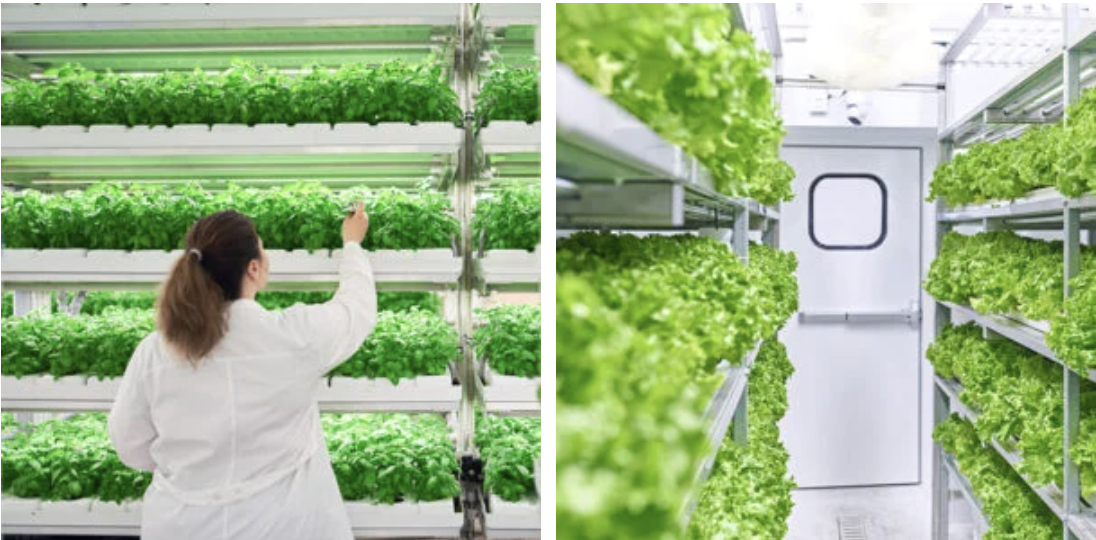AURORA, Colo. (May 8, 2023) — Controlled environment agriculture (CEA) plays an important role in modern farming and our future food system by improving access to affordable, high-quality and nutritious produce through a resilient, sustainable supply chain. In the face of rising input costs, environmental variability and increasing consumer demand for local produce, CEA reduces inputs and returns the most consistent level of quality nutrients—independent of weather and other uncontrollable factors associated with traditional agriculture.
“We envision a world where CEA technology and practices combine with traditional farming methods to help feed the world’s growing population,” said Moriah LaChapell, Wilbur-Ellis Agribusiness. “CEA has the potential to improve food systems since it allows us to grow more food with fewer resources.”
What is CEA?
CEA includes indoor and vertical farming practices such as hydroponics, aeroponics and aquaponics that deliver environmental and production benefits by creating sustainable, optimized growing conditions for crop protection against pests and disease. Sample growing facilities include the greenhouse, indoor vertical farms, container farms and micro farms.


Benefits of CEA
“By growing produce in a closed ecosystem, CEA protects plants from harsh environmental conditions and maximizes limited resources including land and water,” said LaChapell.
In CEA facilities, everything plants need at their various growth stages is provided artificially, including water, nutrients, temperature, ideal humidity levels, ventilation, light and CO2. In many controlled systems, plants are grown without soil in a solution of water and nutrients—enabling more, and faster, growth in less space than when planting in soil.
By reducing the effects of seasonality and environmental influences, CEA increases crop yields, reduces input use and allows for locally grown, quick-to-market produce.
Consumer demand increases opportunities for CEA
Research shows that the North American organic food market is expected to grow at a compound annual growth rate of nearly 13% from 2022 to 2030, with the pandemic being a major factor in increased consumption. In 2020, sales of organic foods in the U.S. grew by 14.2%—an increase of $1 billion—driving U.S. imports of more organic produce.
“CEA supports consumer and retail demand for a traceable and trustworthy supply chain and represents a significant business opportunity for interested growers,” said LaChapell. “Indoor, organic production helps to improve food security for the U.S. and can reduce the need for imports as well as cost and delivery time to the consumer.”
The business case for farmers—both rural and urban
According to investors, CEA is forecast to grow 5x over the next 10 years in the U.S., with growth driven not only by demand but also by the shrinking supply of agricultural land in the region, a challenging labor market, weather and climate change, as well as a diversified crop offering and technology advancements that support cost-effective CEA.
Controlled environmental farming makes fresh fruit, vegetables and legumes accessible to retailers and consumers anytime of the year. It mitigates spoilage, reduces food waste and helps to increase produce consumption by decreasing cross-country transportation and related supply chain issues.
“CEA is growing quickly, and both rural and urban farmers have been able to benefit from small-scale CEA set-ups to diversify their produce and minimize their reliance on manual labor and/or inputs,” said LaChapell.
Considerations for CEA adoption
While growing quickly, CEA only produces a small amount of food relative to outdoor production. And CEA growers can face several challenges for implementation, including access to capital, high energy costs and building-related issues like management of environmental conditions.
“With the right expertise and support, we recommend that interested growers work with trained agronomic specialists to start out small and test ROI on their operation,” said LaChapell.
“At Wilbur-Ellis, our team starts by evaluating the grower’s individual business goals and related start-up and production costs. Then we help develop a tailored business plan to support the grower’s success, assisting with things like equipment and input use, product selection and application, and more,” said LaChapell.
There is no doubt it will take continued innovation to overcome some industry challenges, but CEA shows strong growth opportunities for the years ahead and the potential to impact food system change for the long-term.


